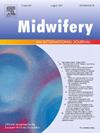对于选择在家分娩的妇女来说,安全和风险意味着什么?系统回顾
IF 2.6
3区 医学
Q1 NURSING
引用次数: 0
摘要
尽管有明确的证据支持在家分娩的安全性和有效性,但这一概念挑战了医院是最安全的分娩场所这一几乎普遍的信念。由于普遍存在的关于风险和安全的信念和观念,在家分娩在世界范围内仍然基本上不受支持。尽管障碍重重,妇女仍然选择在家中分娩。方法对定性研究进行系统回顾,探讨和了解妇女对选择在家分娩的分娩和分娩的风险和安全的看法。对所有研究的质量和相关性进行评估。反身性主位分析用于识别主位。结果对纳入的29篇论文的分析确定了三个主题:医院分娩的风险、在家分娩的风险和在家分娩的安全,并传达了选择在家分娩的妇女非常重视她们的社会、情感、心理和精神安全,在家分娩保护和尊重这些因素。对于我们回顾的研究中的妇女来说,在分娩时有专业助产士在场,从而提高了她们的人身安全。与会者认为,医院服务中的文化范式侧重于对身体而不是整个人的护理,这可能造成心理和身体伤害。本综述表明,选择在家分娩的妇女评估风险和安全性的方式与卫生保健机构评估这些参数的方式不同。这些发现将对产妇服务和产妇保健从业人员的教育工作者感兴趣。本文章由计算机程序翻译,如有差异,请以英文原文为准。
What do safety and risk mean to women who choose to birth at home? A systematic review
Introduction
Despite clear evidence to support the safety and efficacy of homebirth, the concept challenges the almost universal belief that hospital is the safest place to give birth. Homebirth remains largely unsupported around the world due to prevailing beliefs and constructs surrounding risk and safety. Despite barriers to access, women continue to choose home as a place to birth.
Methods
A systematic review of qualitative research was conducted to explore and understand women's views on what constitutes risk and safety in labour and birth for those who choose to birth at home. All studies were evaluated for quality and relevance. Reflexive thematic analysis was used to identify themes.
Results
Analysis of the 29 papers included in this review identified three main themes: risk of hospital birth, risk of homebirth, and safety of homebirth, and convey that women who choose to birth at home view their social, emotional, psychological and spiritual safety as highly important, with homebirth protecting and respecting these factors. For the women in the studies we reviewed, physical safety was enhanced through having the expertise of a midwife present at their birth. Participants considered the cultural paradigm within hospital services to focus on care for the physical body and not the whole person, which had the potential to cause psychological and physical harm.
Discussion
This review demonstrated that women who choose to birth at home assess risk and safety differently to the way health care institutions assess these parameters. These findings will be of interest to maternity services and educators of maternity care practitioners.
求助全文
通过发布文献求助,成功后即可免费获取论文全文。
去求助
来源期刊

Midwifery
医学-护理
CiteScore
4.50
自引率
7.40%
发文量
221
审稿时长
13.4 weeks
期刊介绍:
Midwifery publishes the latest peer reviewed international research to inform the safety, quality, outcomes and experiences of pregnancy, birth and maternity care for childbearing women, their babies and families. The journal’s publications support midwives and maternity care providers to explore and develop their knowledge, skills and attitudes informed by best available evidence.
Midwifery provides an international, interdisciplinary forum for the publication, dissemination and discussion of advances in evidence, controversies and current research, and promotes continuing education through publication of systematic and other scholarly reviews and updates. Midwifery articles cover the cultural, clinical, psycho-social, sociological, epidemiological, education, managerial, workforce, organizational and technological areas of practice in preconception, maternal and infant care.
The journal welcomes the highest quality scholarly research that employs rigorous methodology. Midwifery is a leading international journal in midwifery and maternal health with a current impact factor of 1.861 (© Thomson Reuters Journal Citation Reports 2016) and employs a double-blind peer review process.
 求助内容:
求助内容: 应助结果提醒方式:
应助结果提醒方式:


